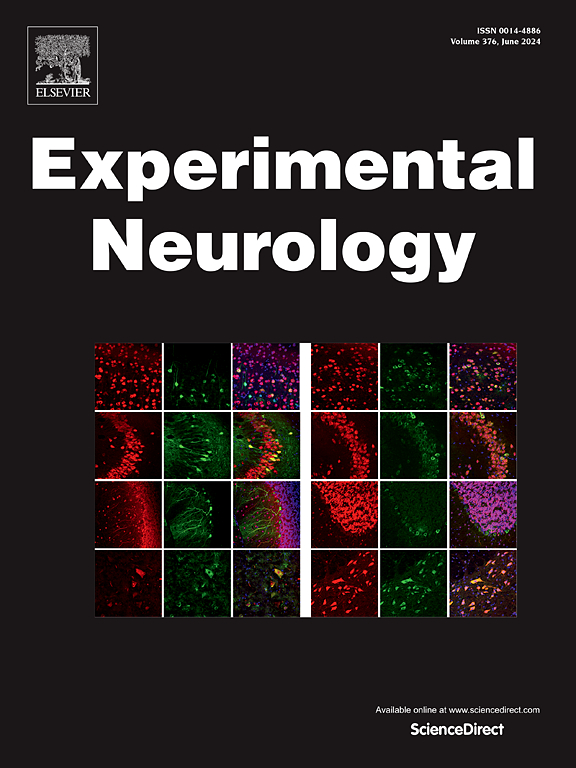缺血性脑卒中的星形胶质增生和胶质瘢痕的机制和治疗。
IF 4.6
2区 医学
Q1 NEUROSCIENCES
引用次数: 0
摘要
缺血性脑卒中是由脑缺血引起的一种神经功能障碍。星形胶质细胞作为中枢神经系统中数量最多的胶质细胞类型,在脑缺血后被激活为反应性星形胶质细胞,这一过程涉及一系列细胞表面受体、离子通道和离子转运体、GTPase、信号通路等的激活或改变。反应性星形胶质细胞在缺血性脑卒中发病过程中的作用与时间有关。在缺血早期,反应性星形胶质细胞适度增殖并包围缺血组织,防止病变扩散。同时,反应性星形胶质细胞释放神经保护因子,最终缓解脑损伤。在缺血晚期,反应性星形胶质细胞过度增殖和迁移,形成致密的胶质瘢痕组织,阻碍受损组织的修复。同时,胶质瘢痕中的反应性星形胶质细胞会释放大量神经毒性因子,最终加重缺血性脑卒中的病情。本文重点研究了脑缺血后星形胶质细胞增多和胶质瘢痕形成的分子机制,并探讨了以胶质瘢痕为治疗靶点的相关研究,为缺血性脑卒中治疗策略的选择和进一步的研究方向提供参考。本文章由计算机程序翻译,如有差异,请以英文原文为准。
Astrogliosis and glial scar in ischemic stroke - focused on mechanism and treatment
Ischemic stroke is a kind of neurological dysfunction caused by cerebral ischemia. Astrocytes, as the most abundant type of glial cells in the central nervous system, are activated into reactive astrocytes after cerebral ischemia, and this process involves the activation or change of a series of cell surface receptors, ion channels and ion transporters, GTPases, signaling pathways, and so on. The role of reactive astrocytes in the development of ischemic stroke is time-dependent. In the early stage of ischemia, reactive astrocytes proliferate moderately and surround the ischemic tissue to prevent the spread of the lesion. At the same time, reactive astrocytes release neuroprotective factors, ultimately relieving brain injury. In the late stage of ischemia, reactive astrocytes excessively proliferate and migrate to form dense glial scar tissue, which hinders the repair of damaged tissue. At the same time, reactive astrocytes in the glial scar release a large number of neurotoxic factors, ultimately aggravating ischemic stroke. In this paper, we focus on the molecular mechanism of astrogliosis and glial scar formation after cerebral ischemia, and explore the relevant studies using glial scar as a therapeutic target, providing a reference for the selection of therapeutic strategies for ischemic stroke and further research directions.
求助全文
通过发布文献求助,成功后即可免费获取论文全文。
去求助
来源期刊

Experimental Neurology
医学-神经科学
CiteScore
10.10
自引率
3.80%
发文量
258
审稿时长
42 days
期刊介绍:
Experimental Neurology, a Journal of Neuroscience Research, publishes original research in neuroscience with a particular emphasis on novel findings in neural development, regeneration, plasticity and transplantation. The journal has focused on research concerning basic mechanisms underlying neurological disorders.
 求助内容:
求助内容: 应助结果提醒方式:
应助结果提醒方式:


